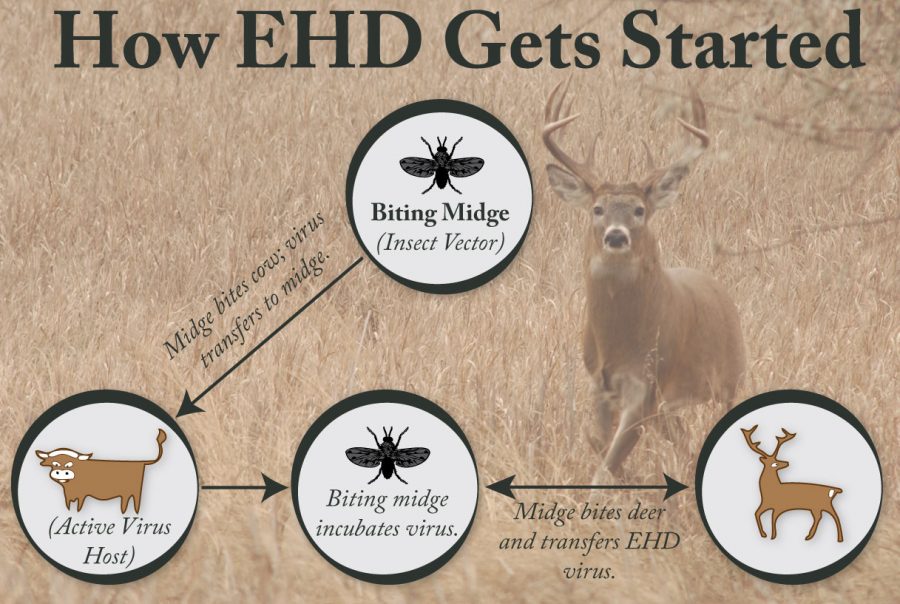Oh, deer!
Diseases throughout deer population creates problems for hunting season
Every year in Beaver County, hunting season rolls around. Student and adult hunters alike participate in the yearly hunt for the common white-tailed deer. This year, this informal holiday will have a slight difference to it. While factors like low birth rates or overly-active predators might be the reason for a lower population of white-tailed deer, that is not the case. Instead, the white-tailed deer population faces an internal problem: disease.
The white-tailed deer population of Pennsylvania has been tested and proof of Epizootic Hemorrhagic Disease (EHD) and Chronic Wasting Disease (CHD) has been found in samples of deer in Western Pennsylvania. Both of these diseases are potential deadly to the deer that contract it; however, these diseases can’t be contracted by humans, but they can be transferred to other livestock.
According to the Pennsylvania Game Commision, EHD, often called Bluetongue virus— the name of a closely related disease— is spread to deer and other livestock by midges and flies bites. The virus is picked up by the bite of midges and flies draining the blood of infected animals and then transferring the disease to the next animal the midges and flies bite. Midges and flies breed near mud, causing deer to contract the disease when they are near muddy areas. The virus is most active during the beginning of fall, just in time for hunting season. The virus usually dies out with the first hard frost when all of the midges and flies carrying the virus die.
“Don’t hunt by a creek. After [deer] are bitten, they crave water and they are usually found dead by creeks,” sophomore Evan Aland said.
Other signs of EHD include: loss of appetite, lethargy, lameness, fever and excessive salivation. So when hunting deer this season, be cautious that the targeted deer does not exhibit any of these symptoms.
Other than EHD, other deer have contracted Chronic Wasting Disease (CWD). CWD causes part of a deer’s brain to degenerate to a sponge-like material. According to the Chronic Wasting Disease Alliance, this leads to a deer starving itself, behaving abnormally, losing bodily functions and eventually dying. Several deer that have tested positive for CWD have charged cars and trucks for no reason. Currently, it is unknown as to how CWD is transmitted between deer, but it has been narrowed down to the feces, urine or saliva that deer left in the places they visited.
“If you are hunting and you see a deer staring at you, there is a chance it has [CWD]. The best thing to do is shoot [the deer] in a place that will not kill the deer or just not shoot it at all,” Aland stated.
Though the meat of a diseased deer can still be eaten, there are many extra steps that hunters have to take in order to make sure the meat is good, which makes it not worth the time and effort to many hunters.
To serve as a reminder, this hunting season, whether someone is into archery or rifles, everyone should be aware of the potential threat that these two diseases have on this year’s hunting season. Be smart and make sure the symptoms of a diseased deer are known so all the deer that are hunted are healthy and provide good meat.



